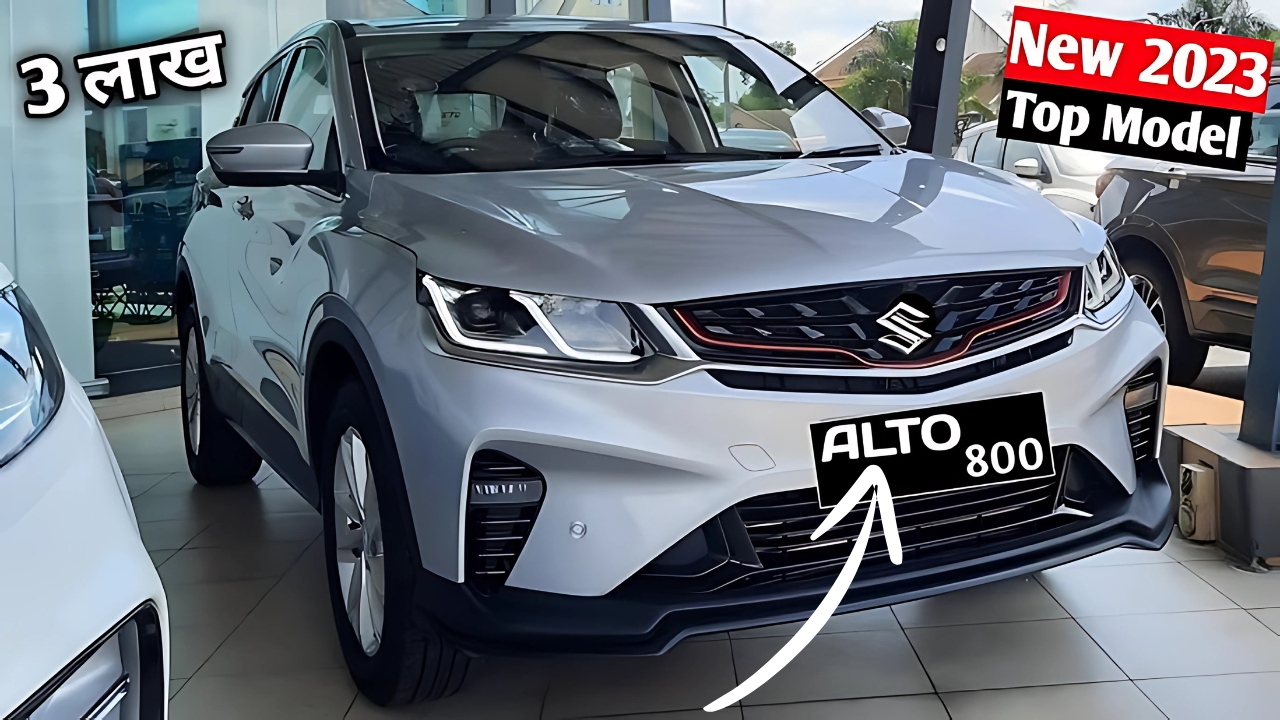In the bustling streets of India, where traffic moves like a chaotic symphony, one small car has been making a big impact for over two decades.
The Maruti Alto, a name that has become synonymous with affordability and reliability, continues to capture the hearts of Indian consumers and dominate the country’s automotive landscape.
A Legacy of Trust
The Maruti Alto’s journey began in September 2000, when it was first introduced to the Indian market.
Little did anyone know that this compact hatchback would go on to become one of the most iconic vehicles in the country’s history.
The Alto wasn’t just a car; it was a dream come true for millions of middle-class Indians aspiring to own their first four-wheeler.
“When we launched the Alto, we knew we had a good product, but its success has surpassed all our expectations,” says Rajesh Kumar, a veteran Maruti Suzuki executive who has been with the company since the Alto’s inception.
“It’s not just a car; it’s become a part of Indian families.”
The Secret Behind Its Success
What makes the Maruti Alto stand out in a market flooded with options?
The answer lies in its perfect blend of affordability, fuel efficiency, and low maintenance costs.
These factors have made it the go-to choice for first-time car buyers and small families alike.
Priya Sharma, a 32-year-old school teacher from Pune, shares her experience: “I bought my Alto five years ago, and it has never let me down.
It’s easy to maneuver in city traffic, doesn’t burn a hole in my pocket with fuel costs, and is surprisingly spacious for its size.”
Evolution Through the Years
The Alto hasn’t rested on its laurels. Over the years, Maruti Suzuki has consistently updated the model to keep up with changing consumer preferences and stricter emission norms.
- 2012: The Alto 800 was introduced, featuring a more modern design and improved fuel efficiency.
- 2015: The Alto K10 variant was launched, catering to customers looking for more power.
- 2019: The BS6 compliant version hit the markets, adhering to stricter emission standards.
- 2022: The new generation Alto K10 was unveiled, boasting enhanced features and a fresh look.
Each iteration has brought something new to the table while maintaining the core values that made the Alto a household name.
Impact on Indian Automotive Industry
The Maruti Alto’s success story isn’t just about impressive sales figures; it’s about how it has shaped the Indian automotive industry.
Its popularity forced competitors to rethink their strategies and launch similar affordable models, ultimately benefiting the end consumer.
“The Alto created a benchmark in the small car segment,” explains Automotive analyst Vikram Mehta.
“It showed that there was a massive market for affordable, reliable cars in India, and this insight has driven product development strategies across the industry.”
Challenges and Criticisms
Despite its overwhelming success, the Alto hasn’t been without its critics.
Some argue that its basic design and features are outdated, especially when compared to more modern competitors.
Environmental activists have also raised concerns about the long-term sustainability of promoting small, gasoline-powered vehicles in a country grappling with severe air pollution.
However, Maruti Suzuki has been quick to respond to these concerns, with plans to introduce electric and hybrid versions of popular models, including the Alto, in the coming years.
The Road Ahead
As India moves towards electric mobility and stricter emission norms, what does the future hold for the beloved Alto? Maruti Suzuki seems prepared for the challenge.
“We’re committed to evolving with the times,” states Akira Tanaka, Chief Technology Officer at Maruti Suzuki.
“The Alto of the future will be greener, smarter, and still as reliable as ever.
We’re exploring various technologies, including mild hybrids and full electric versions, to ensure the Alto remains relevant in the changing automotive landscape.”
A Cultural Icon
Beyond its role as a mode of transportation, the Maruti Alto has become a cultural icon in India.
It’s featured in Bollywood movies, become the subject of memes, and is often used as a metaphor for middle-class aspirations.
Renowned sociologist Dr. Ananya Roy observes, “The Alto is more than just a car in India.
It represents mobility in both literal and metaphorical senses – the ability to move around physically, but also to move up in life.
It’s a fascinating study of how a consumer product can become intertwined with social narratives.”
Maruti Alto
As we look back at the Maruti Alto’s journey, it’s clear that its impact extends far beyond the realm of automobiles.
It has been a catalyst for change, a symbol of progress, and a trusted companion for millions of Indians.
Whether navigating the narrow lanes of old Delhi or cruising on the highways connecting metro cities, the Alto’s distinctive silhouette continues to be a common sight.
As it adapts to meet the challenges of a new era, one thing remains certain – the Maruti Alto’s legacy as the people’s car is firmly etched in India’s automotive history.
In a country where the journey is often as important as the destination, the Maruti Alto has proven to be the perfect companion for millions of Indians on their road to progress.
As it continues to evolve and adapt, it’s clear that this small wonder will continue to play a big role in shaping India’s automotive future.
